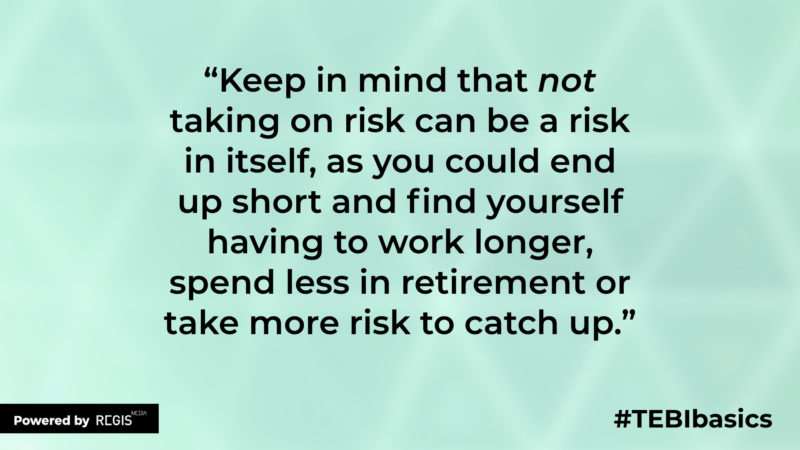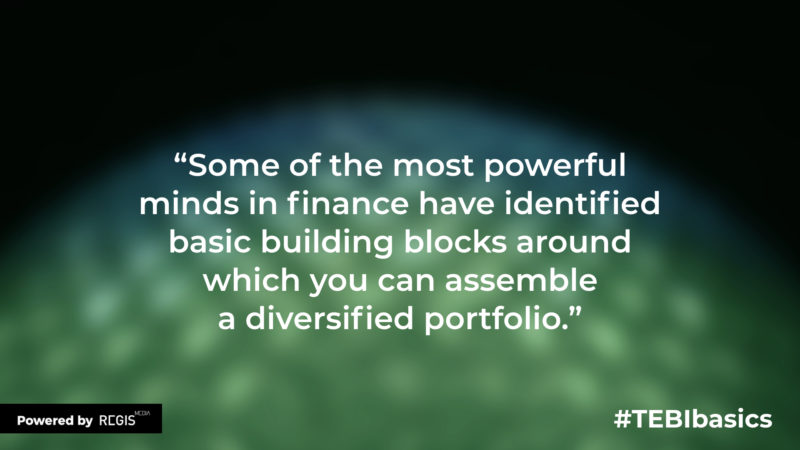
Last time we looked at the importance of basing your investment strategy on solid academic evidence. Our five-part summary of the basics of evidence-based investing continues with a look at how to grow your wealth. The key question to ask here is, Where do investment returns actually come from?
The background
People invest for two main reasons – to grow their wealth or to protect their existing wealth. We seek to grow our wealth to reach financial goals, such as buying a home, starting a business, paying for children’s education or funding our retirement.
Wealth is generated over the long term by investing in a portfolio of assets, including shares, bonds, property and cash. All investing involves a degree of risk and there is no asset that is entirely risk-free. But, generally speaking, the more risk you are prepared to live with, the higher the returns you can expect to receive.
Of course, not everyone needs to invest. If you feel you already have enough to meet your goals, you may decide to simply put your money in the bank. But few of us are in that position, which means that to generate a sufficient retirement pot we need to take on some risk. And keep in mind that not taking on risk can be a risk in itself, as you could end up short and find yourself having to work longer, spend less in retirement or take more risk to catch up.

As an investor, there are essentially two things you can do with your money to make it grow. You can either lend it to someone or become a part owner of a company.
Bonds: When you buy a bond, you are lending money, either to a business or government. The returns you receive comprise the interest paid on the loan (the ‘coupon’) and the expected capital return (the increase in price). As a creditor, you’re nearer the front of the queue should the bond issuer default. For this reason, bonds are seen as safer than shares, but also at the cost of a lower expected return.
Shares: When you buy a share, you’re getting part ownership of the business. Your returns in this case come from the share of the profits paid out as dividends and the expected capital return (the increase in the share price). Being a share owner, you rank behind the creditors if the company goes bust. For this reason, you expect a premium for investing in shares over bonds.
So, different asset classes come with different risks and different rates of return. Generally, cash is seen as the safest, but it also delivers the lowest returns. You could take on slightly more risk and invest in the highest rated government bonds and expect a higher return than just cash. Corporate bonds are another step up from there. And, finally, you can target the highest expected return by investing in equities, or shares. Within shares, there are additional premiums available from small, low relative price and more profitable companies.
The flipside of the higher returns is greater volatility from year to year. In short, shares offer a bumpier ride. But the longer your investment horizon, the less these ups and downs matter. And you can moderate the bumps and increase the reliability by diversifying, as we will see later.
What is the right portfolio for you? It depends on a range of factors, including your individual circumstances, risk appetite and time horizon. Ultimately, the best portfolio is the one you are able to stick with, even when markets are at their most turbulent.
What we do know is that markets over time have a history of rewarding investors who exercise patience and discipline, and who can live with the risk in expectation of the return.
The detail
Over several decades, financial academics have discovered a number of factors that drive returns in the long term. These factors are evident in markets around the world and over long time periods:
The Market: There is a premium available from investing in a broadly diversified portfolio of shares, as opposed to putting all your money in the safest government bonds. This is called the market premium. Shares are more volatile than bonds, but with the offer of a higher expected return.
Size, Relative Price, Profitability: Within the equity market itself, there are three other premiums. Small companies have been shown to offer a higher expected return than large companies over time. Likewise, low relative price or ‘value’ stocks have delivered a long-term premium over high relative price or ‘growth’ stocks. Finally, more profitable companies have delivered a long-term premium over less profitable ones. Like the equity premium itself, these size, value and profitability premiums come and go. Then again, if they were there all the time, there would be no premium.
Term and Credit: Within the bond market, there are two premiums – term and credit. Term refers to how long the bond has till it matures or comes due. This can range from a few months to 30 years or more. Generally, the longer the term, the higher the expected return. The credit factor refers to the likelihood of the bond defaulting. Generally, there is a premium for investing in lower credit. However, these term and credit premiums (as with the equity, size, value and profitability premiums) are not constant over time.
In summary, financial economists have built a strong sense of what drives returns over the long term. Investors can build diverse portfolios around these long-term drivers, trading off risk and return according to their own tolerances, circumstances, goals and time horizons.
The evidence
The academic evidence for what drives returns over the long term has been building over 70 years, a process than has accelerated since the 1960s and the development of computers.
The first breakthrough came in the early 1960s with the arrival of the Capital Asset Pricing Model, or CAP-M for short. The CAP-M was developed by, among others, William Sharpe, who later won the Nobel Prize in Economic Sciences.
Sharpe put forward the idea that investors are rewarded for ‘market risk’ — in other words, the risk that remains after all company-specific risk is diversified away. The more market risk you take, Sharpe said, the higher you can expect your investment returns to be.
Building on his work, two academics, Eugene Fama (another Nobel laureate) and Kenneth French, later built a multi-factor model of stock returns. This was initially posed as a three-factor model (the market itself, size and relative price), but was later extended to a five-factor model (also incorporating profitability and investment).
While these factor premiums are evident in markets around the world, they are not there every year and are more volatile than the market as a whole.
More recently, other academics have claimed to discover literally hundreds of other premiums, to the point where this area has become known as a ‘factor zoo’. However, Fama, French and others have cautioned that some of these ‘factors’ are not sufficiently persistent or pervasive or practical to implement to be clear the bar of being reliable long-term drivers of return.
It’s an arcane and often impenetrable field for most people. For the average investor, though, it is enough to know that some of the most powerful minds in finance have identified basic building blocks around which you can assemble a diversified portfolio. How much you tilt your portfolio to these factors – the market itself, size, value and profitability in equities and term and credit in bonds – will depend on your own tastes, preferences and circumstances.

Next time: Protecting your wealth
If you missed Part 1 of this series, here it is:
Part 1: Starting with evidence
Looking for a financial planner with an evidence-based investment philosophy? We may be able to help you. Click here for more details.
This content, and indeed all of the content you will find on The Evidence-Based Investor, is for informational, entertainment or educational purposes only and should not be construed as investment advice. While the information provided is believed to be accurate, it may include errors or inaccuracies.
COPYRIGHT
Regis Media owns the copyright to all of TEBI’s content, and republishing any of it without permission is strictly prohibited. We will take appropriate action in the event of any infringements.
Financial advisers may wish to note that we allow selected firms to use our investor education content under licence, and that we also produce original and customised articles and videos. Visit our website for further information.









